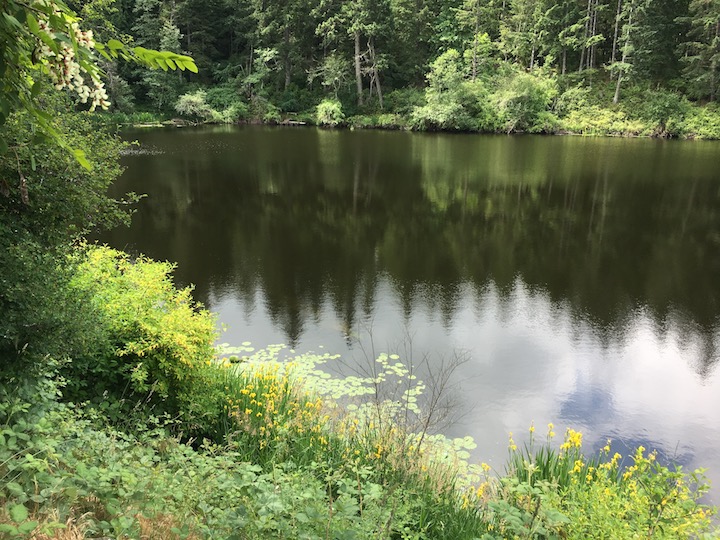Where Kings Fish: Ospreys of Wildwood
By Alexander Smith
After a non-stop morning of camp on hot summer days, I often venture down to the lakeside to cool off. My visits are usually peaceful—the occasional, angry-sounding kingfisher rattling from a low branch, or frogs croaking among the lily pads. However, as I stared blankly out across the still water one afternoon, a sudden crash shattered the calm. Just to my right, the surface exploded. An osprey burst from the lake in a flurry of wings and spray, talons clutching a wriggling fish.
Ospreys (Pandion haliaetus) are instantly recognizable, even from afar. Their striking dark eye-stripes, hooked beaks, and long, fingered wings give them a distinctive silhouette as they soar over treetops and shorelines. Their Latin name, Pandion haliaetus, roughly translates to “king of the sea eagles”—and while the osprey isn’t technically an eagle, it is undeniably the king of aerial fishing. Unlike most raptors, ospreys feed almost exclusively on fish, making them powerful indicators of aquatic health in the broader Wildwood landscape. Their presence signals clean water, abundant fish populations, and intact food webs—all of which are quietly supported by the ecological balance this forest strives to maintain.
Nesting high in snags or on platforms erected by conservationists, ospreys return to Wildwood year after year, often to the same nest. These structures—massive piles of sticks sometimes over a metre wide—are patched and rebuilt each spring, growing with the years like woody monuments to generational fidelity. It’s not uncommon for a single pair to occupy the same nest for over a decade, raising clutch after clutch of downy white chicks who will fledge by summer’s end and migrate as far south as South America.
Their fishing technique is a masterclass in timing and adaptation. With reversible outer toes and barbed footpads, ospreys can grip slippery fish with lethal precision. They dive feet-first, often submerging completely, and emerge with their prey aligned head-forward for aerodynamic flight. This remarkable specialization makes them one of the few raptors adapted to a nearly piscivorous diet.
serve as bioindicators—living flags for the health of aquatic systems that border and intersect Wildwood’s terrestrial zones. Decades ago, their populations plummeted due to pesticide use, especially DDT, which weakened eggshells and led to widespread reproductive failure. Their recovery is one of conservation’s quiet triumphs, and today, their wheeling calls above Wildwood are a reminder of what’s possible when ecosystems are allowed to recover.
They also play a subtle ecological role as nutrient transporters. Fish caught in distant lakes or estuaries are sometimes dropped or partially eaten at nest sites deep within the forest, bringing marine nutrients inland—a small but measurable link in Wildwood’s nutrient web. Even their discarded scales and bones enrich the soil beneath their towering nests.
Ospreys have found a haven here precisely because Wildwood practices restraint. The tall Douglas-firs and open snags they rely on are not felled for profit but valued for their ecological contributions. Wildwood’s selective, low-impact forestry leaves the vertical complexity of the landscape intact, preserving sightlines for hunting, perch trees for scanning, and nesting platforms for the next generation of sky hunters.

